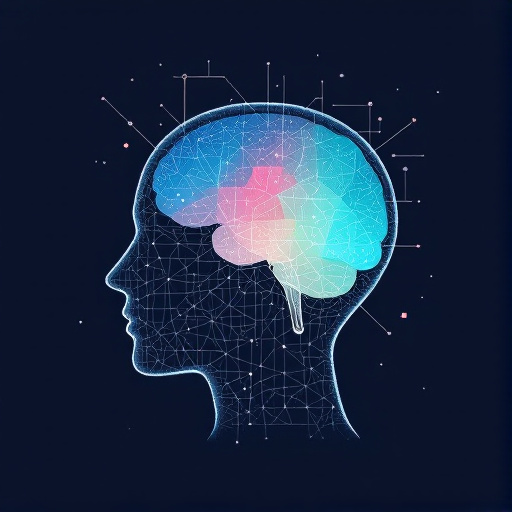Featured Articles
- 9 Essential Psychological Triggers Every Web Designer Must Harness for Maximum User Engagement
- "Beyond Aesthetics: How Neurodesign is Shaping the Future of Web Usability"
- Beyond Aesthetics: The Surprising Role of Color Psychology in Web Design Fundamentals
- Design Disruption: How AI-Driven Aesthetics Are Shaping the Future of Web Design Basics
- Designing for the Unseen: How Invisible Elements Transform User Experience in Web Design Basics
The Art of Imperfection: Embracing Wabi-Sabi in Web Design for Authentic User Experiences
The Art of Imperfection: Embracing Wabi-Sabi in Web Design for Authentic User Experiences
In a world where perfection often reigns supreme, embracing imperfection through the lens of Wabi-Sabi can transform web design into a more authentic and meaningful experience for users. This article explores how the principles of Wabi-Sabi can elevate your web design efforts, weave rich narratives, and foster genuine connections between brands and their users.
The Philosophy of Wabi-Sabi
Wabi-Sabi is an ancient Japanese aesthetic that finds beauty in imperfection, impermanence, and incompleteness. It celebrates natural processes, the cycle of life, and the transient nature of existence. Unlike Western ideals that often emphasize perfection and uniformity, Wabi-Sabi encourages us to appreciate the unique and the flawed. For instance, the art of Kintsugi highlights the beauty of broken pottery repaired with gold lacquer, adding character to the object and deepening its story.
The Imperfect Website: An Unexpected Approach
Imagine landing on a website that feels more like a crafted work of art and less like a slick corporate machine. This is the essence of Wabi-Sabi in web design. It’s about curating an online experience that resonates with users on a deeper level. A study conducted by the Nielsen Norman Group found that users appreciate websites that tell a story and forge an emotional connection, with 86% of visitors expressing a preference for authentic over polished designs (Nielsen Norman Group, 2021).
Connecting Through Authenticity
Consider Airbnb's website, which often features user-generated content, photos, and stories from actual hosts and guests. This approach not only creates a sense of community but also draws users in with authentic experiences and perspectives. It acknowledges the beauty of diversity and the imperfections inherent in human life. The result? Increased user engagement and trust, as authenticity tends to resonate across demographics, appealing to people aged 16 to 70.
Statistics and User Expectations
Let's talk numbers! According to a report from Adobe, 38% of users will stop engaging with a website if the content or layout is unattractive. However, the same report highlighted that 71% of people prefer custom content over standardized content. This means that while users may initially shy away from designs that seem "unpolished," they are ultimately seeking experiences that feel tailored and personal.
Fostering Community with Wabi-Sabi Principles
Incorporating Wabi-Sabi can foster a sense of community and belonging. Websites like Etsy exemplify this ethos, with their focus on handmade, often imperfect goods. Shoppers are drawn to the stories behind the products and the artisans who create them. Here, the imperfections tell a story, creating emotional bonds and encouraging repeat visits and purchases.
The Conversational Tone: Engage Your Users
Let’s get a bit personal. Think about your favorite websites. What draws you in? Often, it’s the little quirks—the asymmetrical layouts, the handwritten fonts, the honest language. The design feels less like a sterile product and more like someone’s cozy living room. By allowing your web spaces to reveal their “flaws,” you invite users into a narrative that is real, relatable, and engaging. Think of the difference between strolling through a gallery of perfect, replicated art versus discovering a quirky local artist’s studio with pieces full of character and backstory.
Conclusion: Embrace the Flaws
As we conclude, it’s vital to remember that embracing Wabi-Sabi in web design is not about neglecting standards or usability; it’s about enhancing them. Balancing aesthetics with functionality creates a compelling user experience. Let your users’ experiences be rich with authenticity, storytelling, and a touch of imperfection. This approach not only positions your brand as innovative but may also lead to stronger connections and loyalty that traditional, flawless designs often lack.
Case Study: The Rise of Wabi-Sabi Influencers
One of the most vivid examples of Wabi-Sabi's application in digital influence is seen in social media accounts like @theminimalists and @thiscould.be.us, who advocate for simplicity and authenticity over polished perfection. They have gained substantial followings by sharing unfiltered moments from their lives, encouraging their audience to find beauty in everyday experiences. This movement not only reflects a significant cultural shift but also highlights shifting expectations in web design.
The Humor in Imperfection
Alright, let’s inject some humor into this analysis. You know those “under construction” pages that seem to exist in a perpetual state of being worked on? These are the digital equivalent of a messy garage—full of potential but also a bit of a hazard. Yet, just like finding your old baseball cards in that same garage, there’s something nostalgic and endearing about the effort. Why not lean into that? Show your users that you, too, are on a journey, growing and evolving through your web presence!
Final Thought: Taking the Plunge
So, are you ready to dive into the world of Wabi-Sabi in web design? Whether you’re an established firm or a fresh startup, the concept serves as a powerful reminder to embrace the messy, the imperfect, and the human elements that make businesses thrive. Users are not solely looking for aesthetic perfection; they’re searching for authenticity that resonates with their own lives and experiences. So grab your metaphorical paintbrush and let those beautiful imperfections shine!
Call to Action
In a nutshell, explore the beauty of imperfection in your design process. Consider how you can implement Wabi-Sabi in your next project. Remember, it’s about finding a deeper connection with your users and creating experiences that are not just functional but beautiful in their authenticity. Share your stories and experiences and inspire your audience to embrace the art of imperfection!




